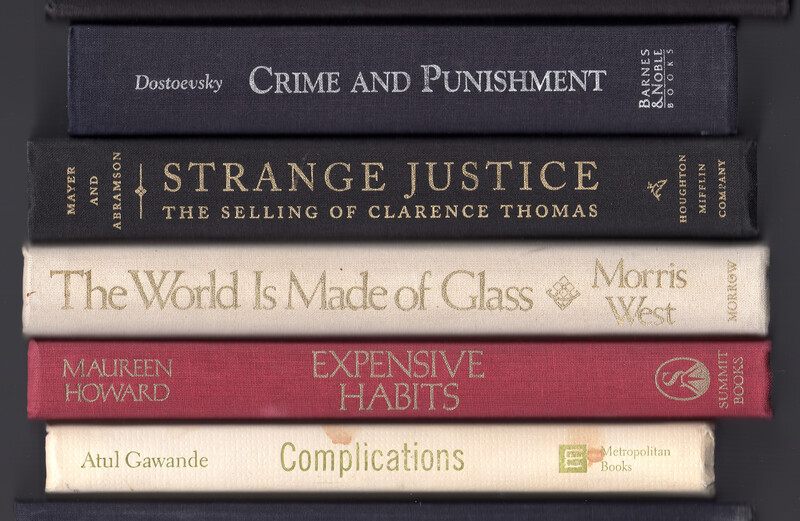
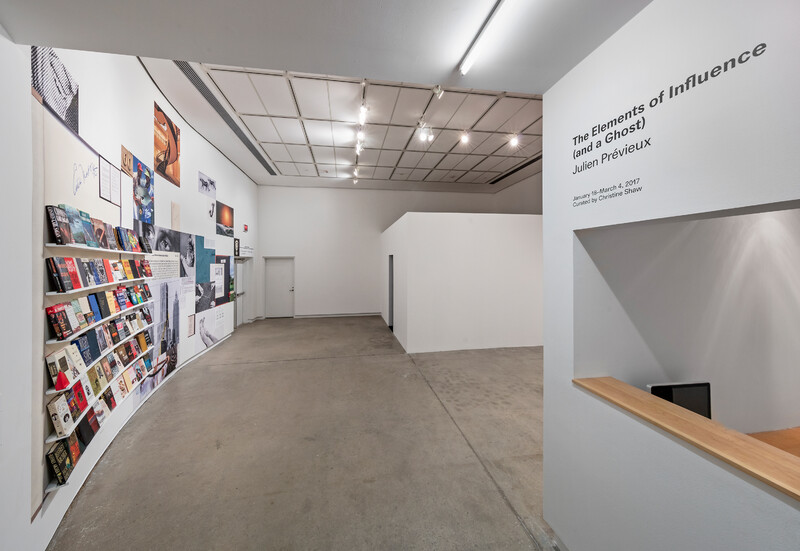
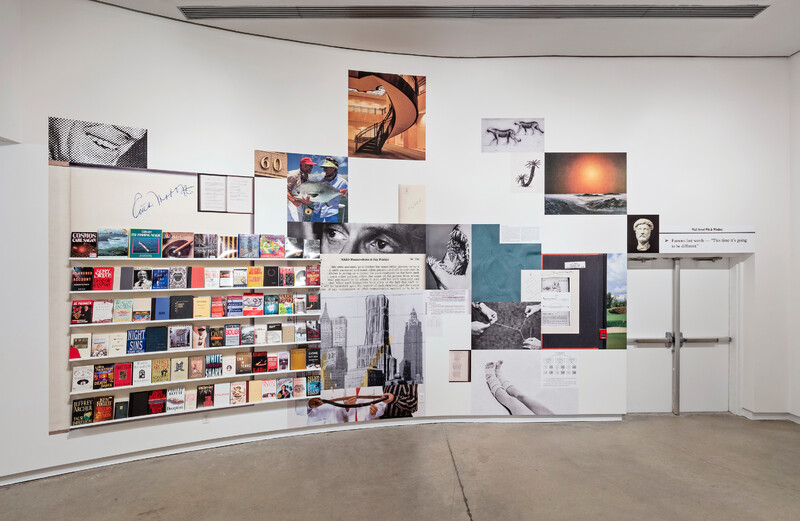
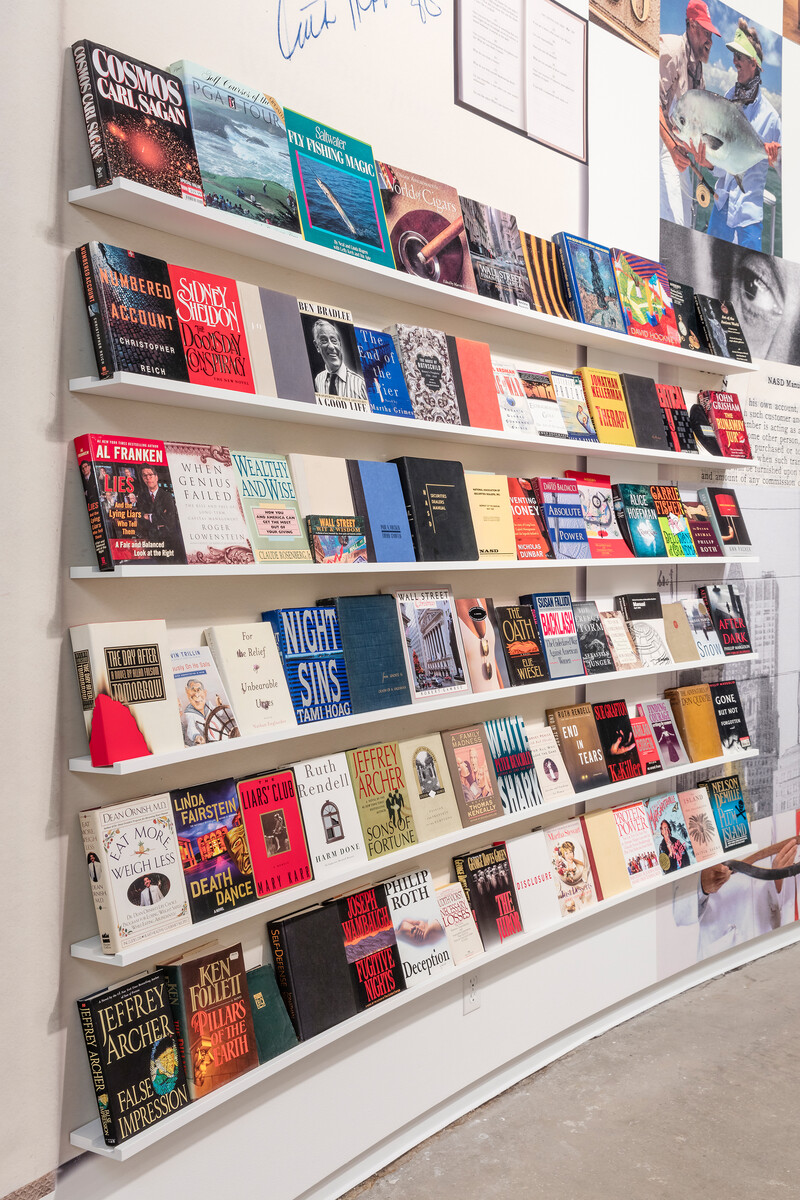
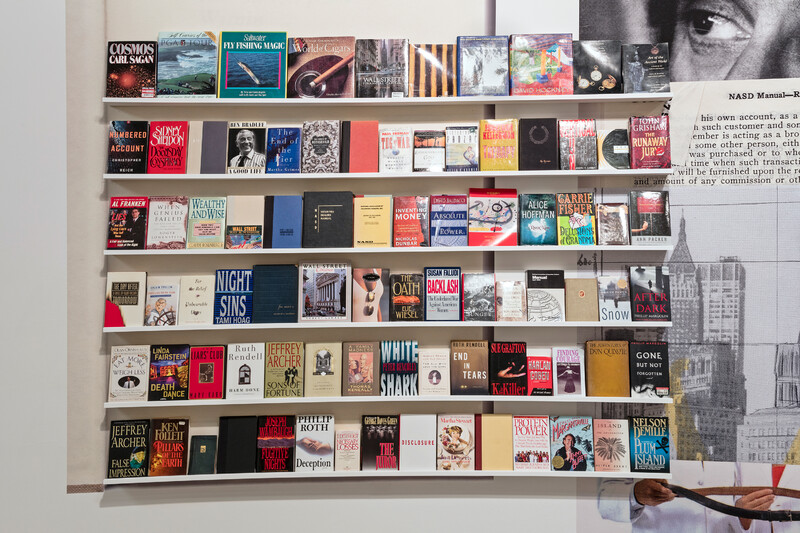
Forget the Money
Forget the Money is an installation based on the bookshelves of the (in)famous American businessman Bernard Madoff, convicted of embezzling 65 billion dollars—a crime that came to light during the 2008 financial crisis. In November 2011, the FBI sold Madoff’s personal effects in an auction in New York. For some time, Prévieux had been looking for what might be called “relics of crisis,” iconic residues of recent financial scandals that could give insight into our economic environment. In Forget the Money, Prévieux presents approximately a hundred books—thrillers, financial guides, rich man’s sports books, classics, art books, and auction magazines— which once belonged to Madoff. These books with their premonitory titles (End in Tears, No Second Chance, The World is Made of Glass, The Investigation, White Shark, K is for Killer...) seem to work like relics, borrowings from an ambiguous fetishism, based, obviously enough, less on their quality than on the fate of their owner. They are a little snippet of history erected as an absurd monument, which broaches the scandal from the wings, its lesser details appearing to be harbingers of the drama.
The images Prévieux assembles in Forget the Money highlight particular items from the collection, which become a kind of indirect portrait of Madoff, the system he built, and the social context that enabled his fraud. The installation traverses the smile of Reagan, the rules of fair practice in finance, a drawing by Christo he might have owned, a portrait of Marcus Aurelius, an enthusiastic description of Lehman Brothers found in a book on Wall Street, a glass stain, the stairs Madoff probably climbed at JP Morgan, a simulation of the day before the sun absorbs the earth, the golf course where he found his victims, exercises to relieve back pain, and a Lamb.

The Blackwood
University of Toronto Mississauga
3359 Mississauga Road
Mississauga, ON L5L 1C6
[email protected]
(905) 828-3789
The galleries are open. Hours of operation: Monday–Saturday, 12–5pm.
Holiday hours: regular gallery hours are in effect until and including Saturday, December 6. The galleries will then be closed for the holidays, except for regular hours on Saturday, December 13. In 2026, the galleries reopen Monday, January 5.
Facebook | Twitter | Instagram
Sign up to receive our newsletter.
The Blackwood is situated on the Territory of the Mississaugas of the Credit, Seneca, and Huron-Wendat.